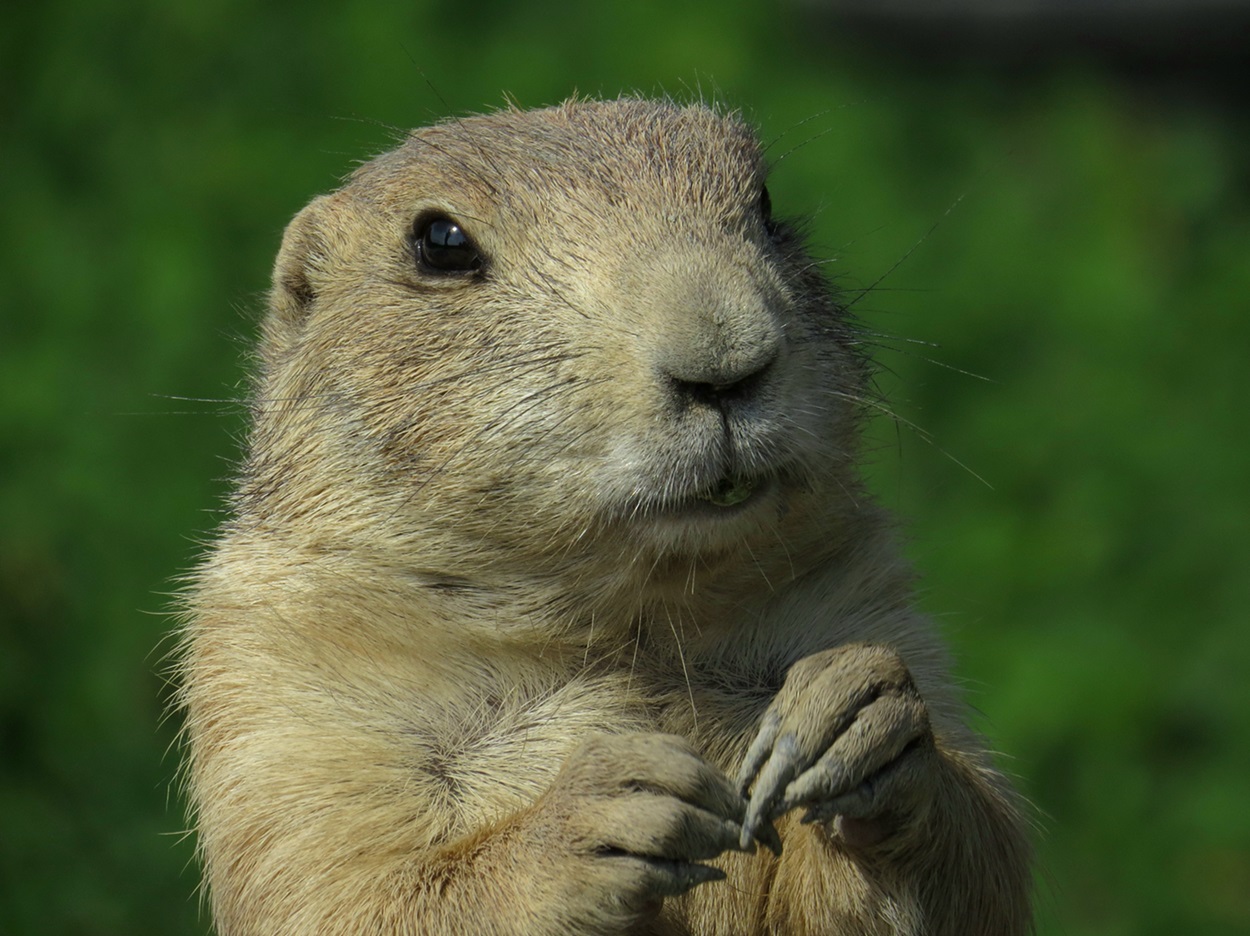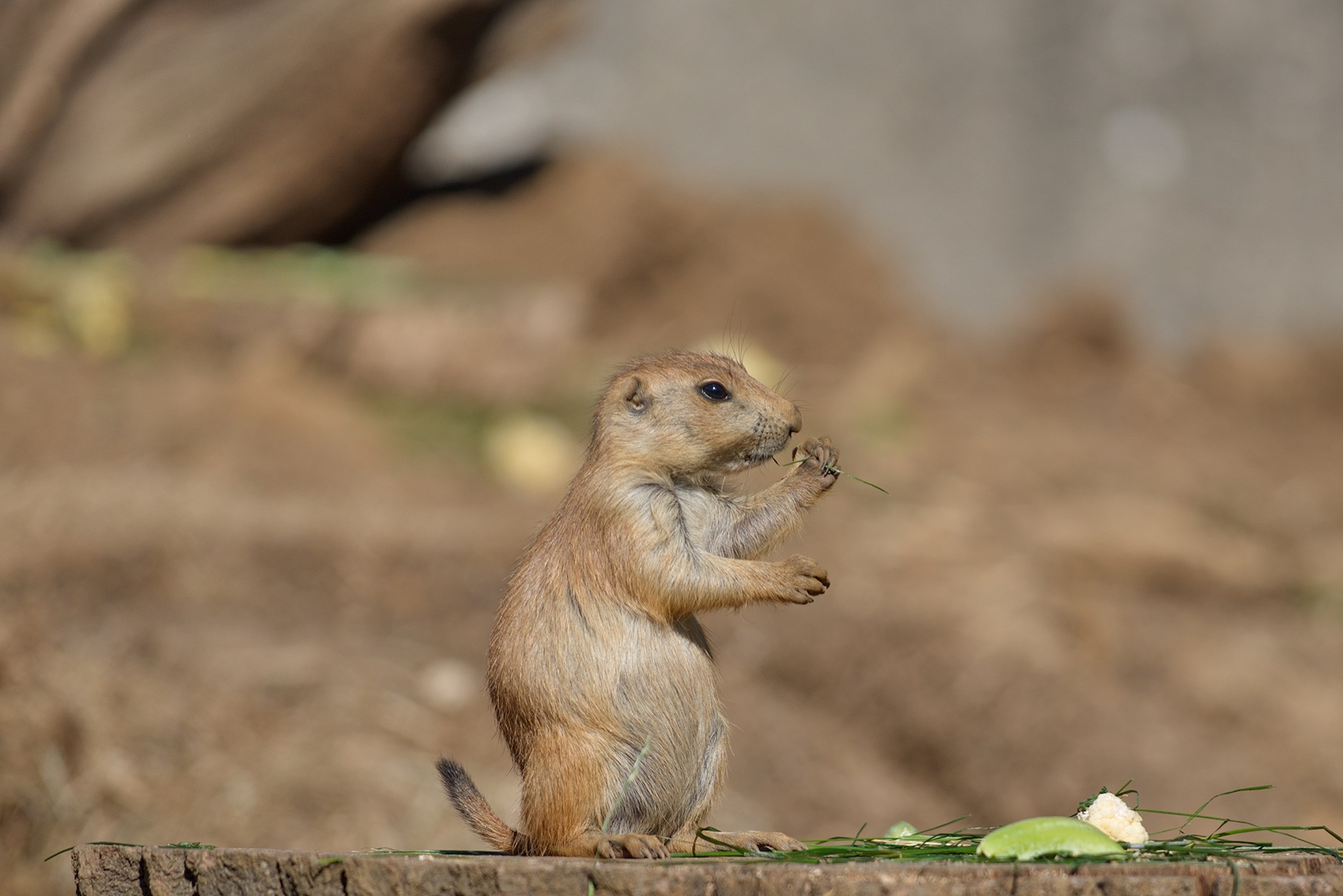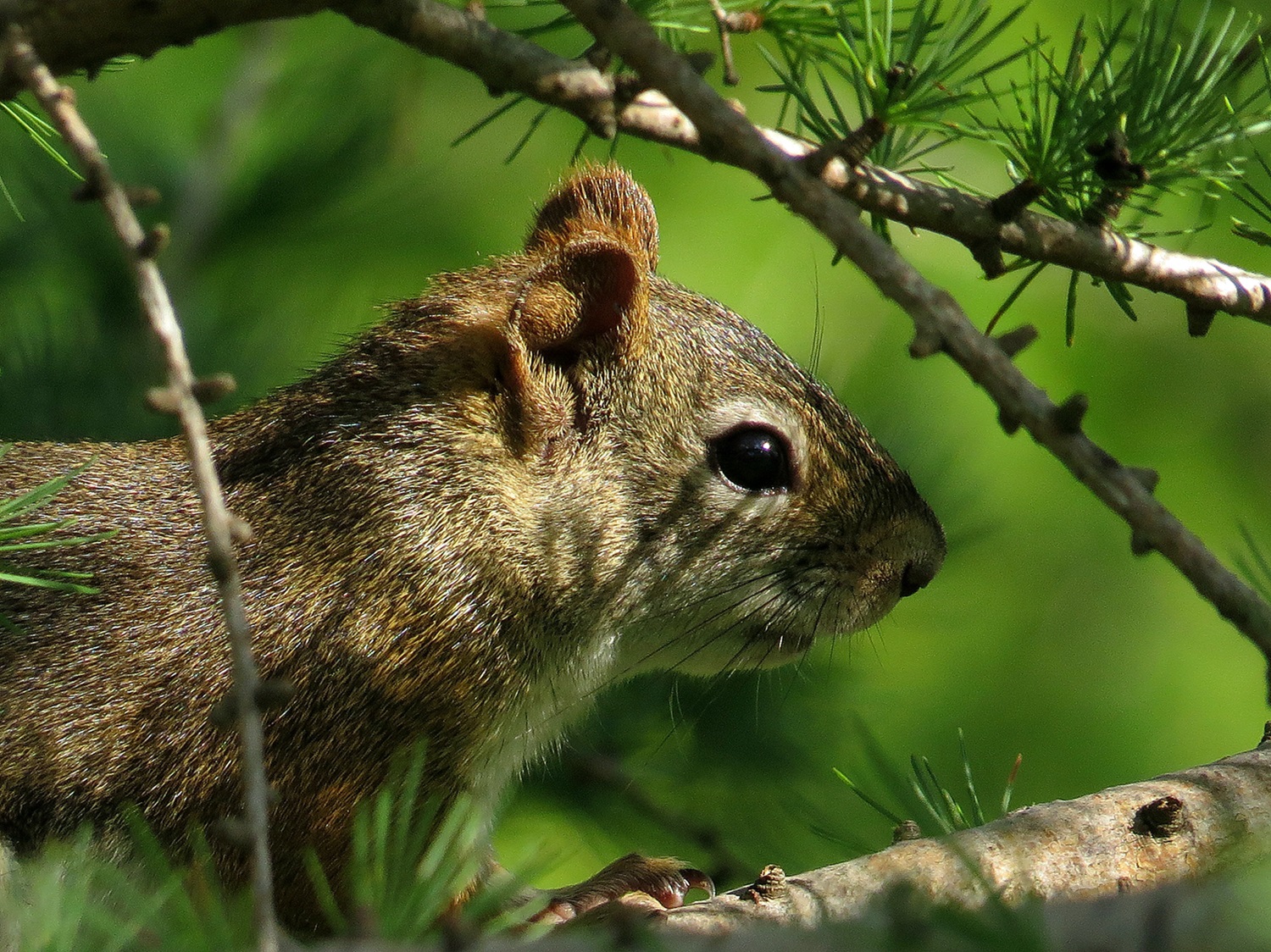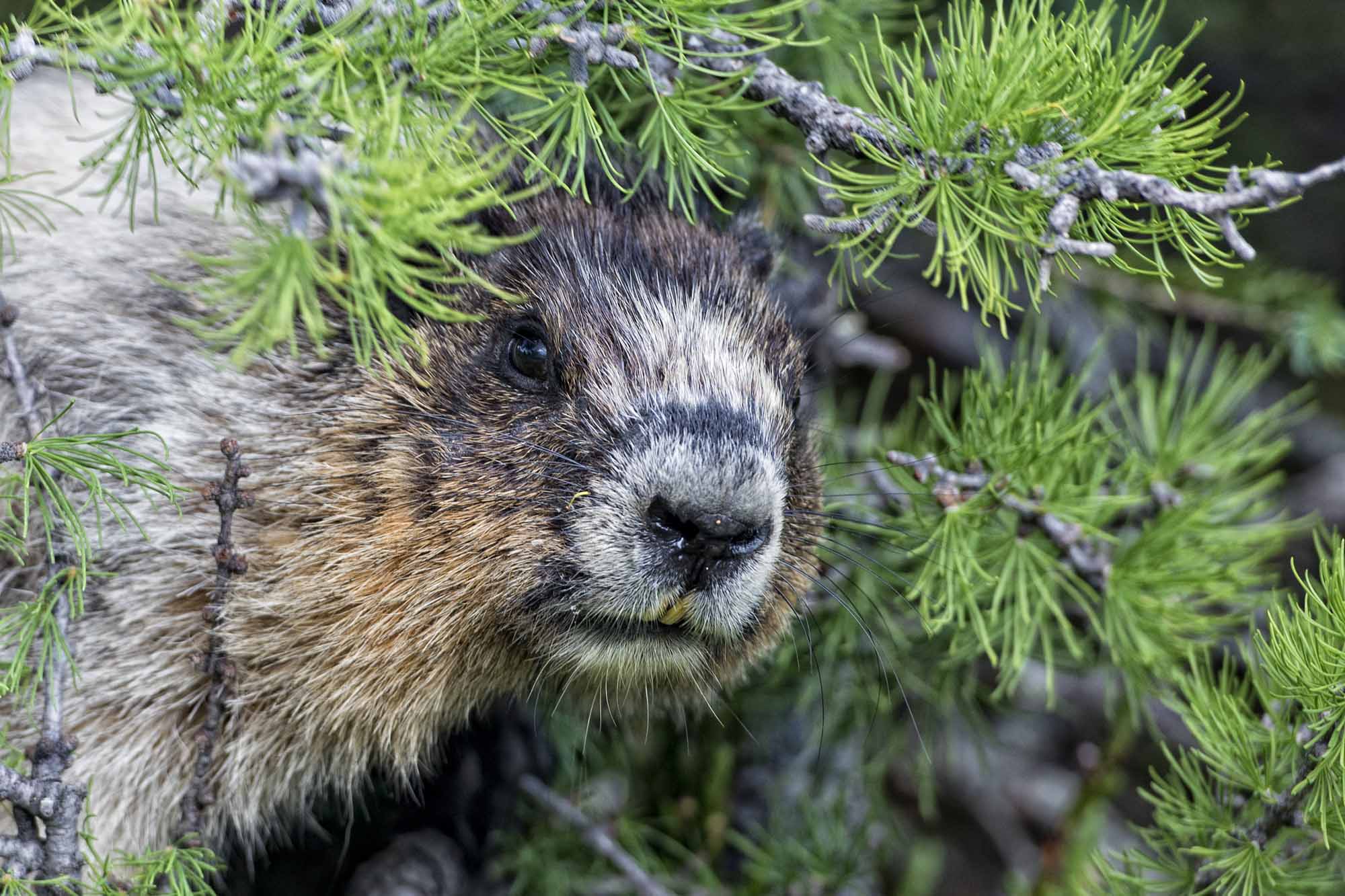The black-tailed prairie dog (Cynomys ludovicianus) is a highly gregarious, diurnal, terrestrial ground squirrel that lives in colonies or “towns.” It is very vocal, and one call, a bark, prompted its generic name, Cynomys (Latin, "dog mouse") and its common name. While five species of prairie dogs (genus Cynomys) exist, only the black-tailed prairie dog extends into Canada.

Description
Black-tailed prairie dogs are beige-brown above and whitish below, with short ears and black-tipped tails. Adults weigh 1–1.5 kg. Prairie dogs remain close to elevated bare mounds that surround the mouths of their burrows, using them for vantage points.
One litter (4–5 young) is born each spring in a nesting chamber 4–5 m below the ground surface. Deep chambers are also used during extreme winter conditions. Prairie dogs do not hibernate in the southern part of their range. However, they hibernate around 4 months in the winter in the Canadian section of their range. They use body fat accumulated in autumn when food is scarce.

Ecological Role
Prairie dogs are an important part of many native short and mixed-grass prairie ecosystems. In addition to aiding with soil aeration, their borrows provide breeding habitats for other endangered species, such as the mountain plover and the borrowing owl (see Endangered Animals in Canada and Endangered Plants in Canada). Prairie dogs also serve as important prey to a variety of critical species, such as the reintroduced black-footed ferret.
Conservation and Threats
The Species at Risk Act lists the black-tailed prairie dog as threatened. Prairie dogs receded in distribution due to deliberate exterminations because, although they aid soil aeration with their excavations, they are sometimes thought to compete with domestic livestock for green plants. Canadian black-tailed prairie dogs continue to be vulnerable due to an epizootic sylvatic plague, as well as the increased frequency and intensity of droughts due to climate change.

 Share on Facebook
Share on Facebook Share on X
Share on X Share by Email
Share by Email Share on Google Classroom
Share on Google Classroom




